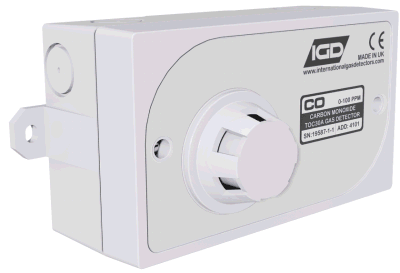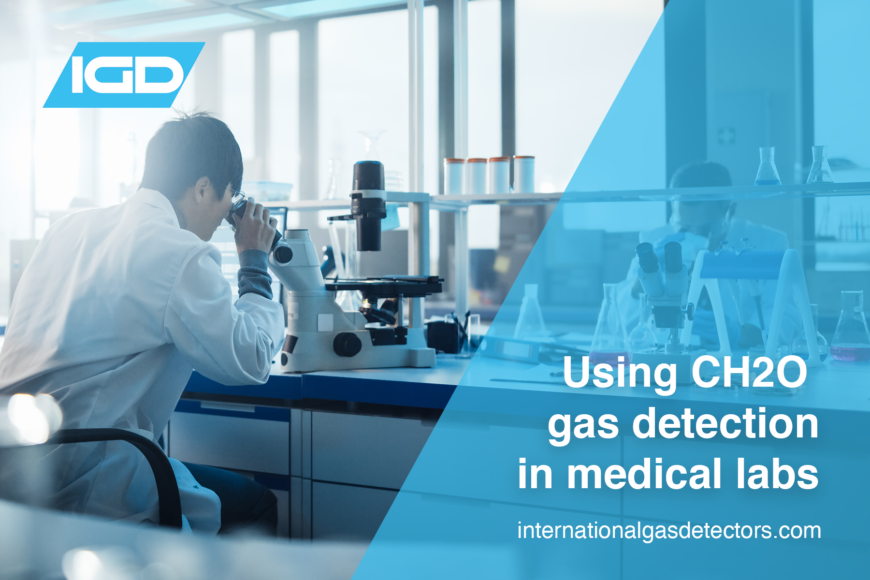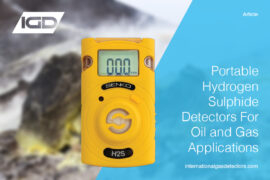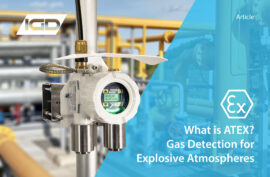Formaldehyde (CH2O) is a fairly simple chemical compound that is naturally produced in low volumes through regular cellular metabolism. It is best known for its profound anti-bacterial characteristics hence its long-standing application as one of the main preservatives used in mortuaries. However, formaldehyde solutions—where the gas is mixed with an aqueous mobile phase—are extremely valuable to a wide range of medical research areas. They are routinely used to deactivate viruses for vaccine manufacturing, for instance.
Permanent formaldehyde gas detectors are common fixtures in medical labs where CH2O detection is crucial for mitigating potentially hazardous occupational exposure levels.
Various fluorometric, spectrophotometric, and other techniques have been developed for the detection of formaldehyde gas in air. However, these fairly large and expensive systems rarely justify the cost of installation primarily given their lack of real-time results. Dedicated formaldehyde gas detectors should provide rapid detection of the gas to guarantee occupational health and safety. Additionally, sensing units should enable straightforward operation so that monitoring the air composition in safe areas is a simply process.
The Risk of Formaldehyde Exposure
The relative abundance of water-based formaldehyde solutions in medical labs represents some cause for concern from an occupational health point of view. Although extremely useful as a preservative, formaldehyde is a ruthless toxin that can lead to fatality following exposure regardless of how it is ingested. It is a systemic poison that may be absorbed or inhaled. Solutions can cause severe burns to both skin and eyes while vapours will severely irritate the respiratory tract, possibly leading to suffocation.
Healthcare professionals and medical lab technicians are in a similar high risk of exposure group to that of morticians, given the regularity with which they handle biological specimens that have been preserved using formaldehyde-based solutions.

Creating Safe Areas with Formaldehyde Gas Detectors
Formaldehyde is a volatile organic compound (VOC) which means solutions tend to off-gas at room temperature. Aqueous formalin is a solution comprised of roughly 40% formaldehyde in a water-based matrix. Although some disinfectants based on 5% formaldehyde are used in hospital settings, it is this higher concentration formalin that is most commonly deployed in medical labs.
Controlling exposure is a matter of ethical and regulatory necessity. Safe areas must be well-ventilated and dedicated formaldehyde gas detectors should be installed to ensure air concentrations never exceed safe limits. The Health and Safety Executive (HSE) defines workplace exposure limits to formaldehyde as two parts per million (ppm) over short periods. Complying with these limits subsequently requires a real-time sensing platform.
Standard analogue point-to-point systems remain the go-to sensor paradigm for medical safe areas, given their simple functionality and familiarity. At International Gas Detectors, we offer the TOC-30 Analogue Gas Detector, a long-term monitoring solution for measuring background atmospheres for formaldehyde within a range of 0—5 ppm. Increasingly, however, we are seeing a greater uptake of addressable safe area detectors with reduced wiring requirements through their daisy chain sequence compatibility. Systems like our TOC-750 Addressable Safe Area Gas Detector are based on unique labyrinth sensor designs for absolute accuracy in CH2O gas detection across a range of 0—5 ppm.
Interested in our Formaldehyde Gas Detectors?
Interested in formaldehyde gas detectors? Contact a member of the International Gas Detectors team today with any questions.
References
- https://www.chemicalsafetyfacts.org/formaldehyde/
- https://www.atsdr.cdc.gov/mmg/mmg.asp?id=216&tid=39#:~:text=Formaldehyde%20is%20a%20highly%20toxic,to%20the%20eyes%20and%20skin.
- https://www.ncbi.nlm.nih.gov/pmc/articles/PMC3673094/




